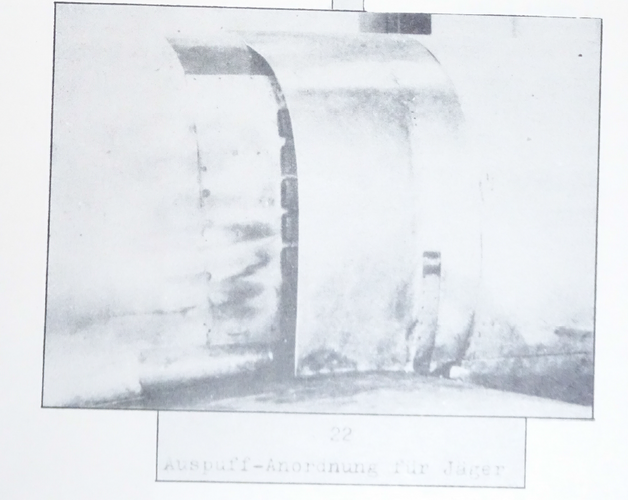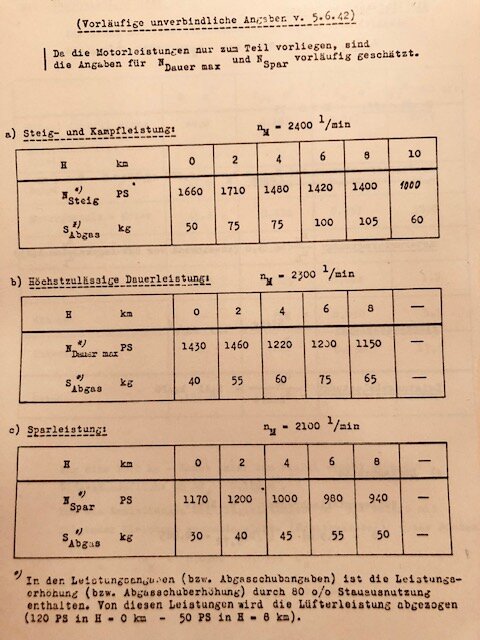You are using an out of date browser. It may not display this or other websites correctly.
You should upgrade or use an alternative browser.
You should upgrade or use an alternative browser.
Understanding and calculating exhaust thrust
- Thread starter Nicknick
- Start date
Sorry, what is BAMA?At BAMA, file R 3/3708.
Bundesarchiv - https://www.bundesarchiv.de/EN/Navigation/Home/home.htmlSorry, what is BAMA?
Hi Basil,
You can find a brief description how to access scanned documents from BAMA here:
The signature Tomo provided in this thread takes you right to the desired document
This it the direct link to the invenio engine:
Regards,
Henning (HoHun)
Sorry, what is BAMA?
You can find a brief description how to access scanned documents from BAMA here:
The signature Tomo provided in this thread takes you right to the desired document
This it the direct link to the invenio engine:
Regards,
Henning (HoHun)
In the original brochure for the RLM from Blohm & Voss on the BV-P 170, the data sheet on the engine power of the BMW 801 D also shows the exhaust thrust in connection with power selection and altitude.
S Abgas stands for Schub Abgas = Exhaust thrust in kg (= kp = kilopond)
PS = hp
Last paragraph: The increase in performance by utilizing the dynamic pressure is included in the calculation; the fan power (120 hp / 50 hp) is deducted.
S Abgas stands for Schub Abgas = Exhaust thrust in kg (= kp = kilopond)
PS = hp
Last paragraph: The increase in performance by utilizing the dynamic pressure is included in the calculation; the fan power (120 hp / 50 hp) is deducted.
Attachments
Last edited:
In the original brochure for the RLM from Blohm & Voss on the BV-P 170, the data sheet on the engine power of the BMW 801 D also shows the exhaust thrust in connection with power selection and altitude.
Is that brochure freely available?
These are reprints from the original brochures. I have bought mine a long time ago and it seems they are still available (now as used).Is that brochure freely available?
Search the internet for Luftfahrt Dokumente by Pawlas Verlag and you will find the RLM brochures for several Blohm & Voss and Focke Wulf late war projects (like the BV-P 215). They are red A4 softcovers and some have larger fold out original three views with different armament configurations in them.
Last edited:
Aerospike exhaust nozzle:
As mentioned earlier, the very unsteady exhaust flow (refering to pressure, temperature, mass flow) and the highly variant athmospheric pressure and and aircraft speed makes it inpossible to find a perfect Laval nozzle for all operation point. However, there is an alternative to the Laval Nozzle and that's the beloved Aerospike. An Aerospike type nozzle can adapt to different pressure ratios much better than a Laval nozzle because of its expansion ratio adaptes to the pressure ratio.
The Aerospike design wasn't allready invented during WW2 and I've never seen it applied to an exhaust stack, but it could surly increase thrust, at least under most cicumstances. It might have been more difficult to implement on an inline engine than on a radial engine, but its intresting to figure out, how this might have looked like.
Unfortunately, with the end of the Unlimited Class at Reno, there is no usefull application of this idea anymore...
As mentioned earlier, the very unsteady exhaust flow (refering to pressure, temperature, mass flow) and the highly variant athmospheric pressure and and aircraft speed makes it inpossible to find a perfect Laval nozzle for all operation point. However, there is an alternative to the Laval Nozzle and that's the beloved Aerospike. An Aerospike type nozzle can adapt to different pressure ratios much better than a Laval nozzle because of its expansion ratio adaptes to the pressure ratio.
The Aerospike design wasn't allready invented during WW2 and I've never seen it applied to an exhaust stack, but it could surly increase thrust, at least under most cicumstances. It might have been more difficult to implement on an inline engine than on a radial engine, but its intresting to figure out, how this might have looked like.
Unfortunately, with the end of the Unlimited Class at Reno, there is no usefull application of this idea anymore...
Scott Kenny
ACCESS: USAP
- Joined
- 15 May 2023
- Messages
- 11,628
- Reaction score
- 14,324
I'm hearing rumblings about Wyoming hosting the races. Will certainly add an aerospike to the list of ideas for my lottery dream of a new Pond Racer.Aerospike exhaust nozzle:
As mentioned earlier, the very unsteady exhaust flow (refering to pressure, temperature, mass flow) and the highly variant athmospheric pressure and and aircraft speed makes it inpossible to find a perfect Laval nozzle for all operation point. However, there is an alternative to the Laval Nozzle and that's the beloved Aerospike. An Aerospike type nozzle can adapt to different pressure ratios much better than a Laval nozzle because of its expansion ratio adaptes to the pressure ratio.
The Aerospike design wasn't allready invented during WW2 and I've never seen it applied to an exhaust stack, but it could surly increase thrust, at least under most cicumstances. It might have been more difficult to implement on an inline engine than on a radial engine, but its intresting to figure out, how this might have looked like.
Unfortunately, with the end of the Unlimited Class at Reno, there is no usefull application of this idea anymore...
Scott Kenny
ACCESS: USAP
- Joined
- 15 May 2023
- Messages
- 11,628
- Reaction score
- 14,324
I gotta win the Lottery first!When you are building you pond racer, I would like to support the engineering
So did I, sadly.Would be great if these races will be continued, I allways wanted to go there and simply waited to long....


